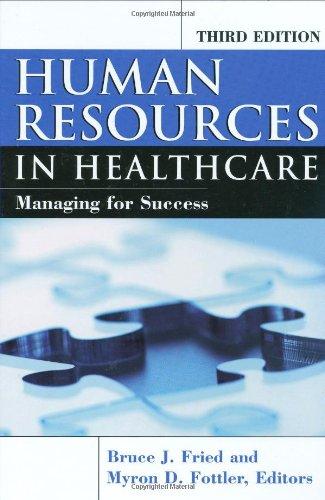Health Valley Hospital provides comprehensive services, including cancer, heart, trauma, and emergency services. It has 2,300 full-time
Question:
Health Valley Hospital provides comprehensive services, including cancer, heart, trauma, and emergency services. It has 2,300 full-time employees. For eight years, Health Valley has had a decentralized philosophy for training and organizational development.
In fact, almost every department has its own trainer/educator. The human resources department also has an education component, called Education Services, that provides training in general topics, including new-employee orientation, customer service, leadership/management, and staff development. Education Services does not provide training in topics such as nursing education, patient safety, emergency medical services, and disaster preparedness.
Because so many training units exist at Health Valley, and all of them separate from each other, tracking of educational information is handled by each training unit. With constant interruptions and emergencies inherent in the hospital environment, it is understandable that this tracking function sometimes gets pushed down to the low end of daily priorities.
Health Valley’s CEO has heard so much about all of the education that occurs within the organization that he wants to highlight it to the hospital’s board of directors.
The CEO immediately sends a memo to the human resources department asking for all sorts of education-related information, including a listing of all education/training activities, under which should be the details of each training such as the title, objectives, how it meets organizational objectives, the outcomes, the name of the educator or facilitator, and the names of the employees who attended and completed.
Because the training information throughout the organization is not housed in a central location, this CEO request is a major undertaking. Furthermore, each training unit tracks the information (when tracking is done, that is) in many different ways and formats, including spreadsheets, handwritten lists, electronic databases, and file folders. The only way for this request to be handled successfully is for all of the involved units to work together collaboratively and quickly.
Following are some strategies that may help if you were in a similar situation:
1. Contact the education/training/OD department in a local hospital or healthcare facility. Interview the head of the department to gain insight into how the training and tracking function is handled (centralized or decentralized, for example). Ask what works well and not so well, and listen for improvements they would like to make.
2. Formulate a short-term plan for responding to the CEO’s primary request.
3. Design a long-term plan for addressing the problem and preventing it from happening again. How should the information be gathered and stored so that it is readily available next time? How is having a centralized recording system valuable to the organization and the employees?
Step by Step Answer:

Human Resources In Healthcare Managing For Success
ISBN: 9781567932997
3rd Edition
Authors: Bruce Fried, Myron D. Fottler





